

Brigham City, Utah — November 17, 2025
In a historic step toward shaping America’s energy future, Utah, Hi Tech Solutions LLC (Kennewick, WA), and Holtec International (Mt. Laurel, NJ) officially launched the Mountain West’s first comprehensive nuclear energy ecosystem, building on a May 5, 2025 Memorandum of Understanding (MOU) that laid the groundwork for this transformative partnership. The MOU envisioned integrating Holtec’s advanced small modular reactors (SMRs) with domestic manufacturing, operational training, and workforce development, creating a blueprint for sustainable and secure energy production while solidifying Utah’s role as a national clean energy leader.
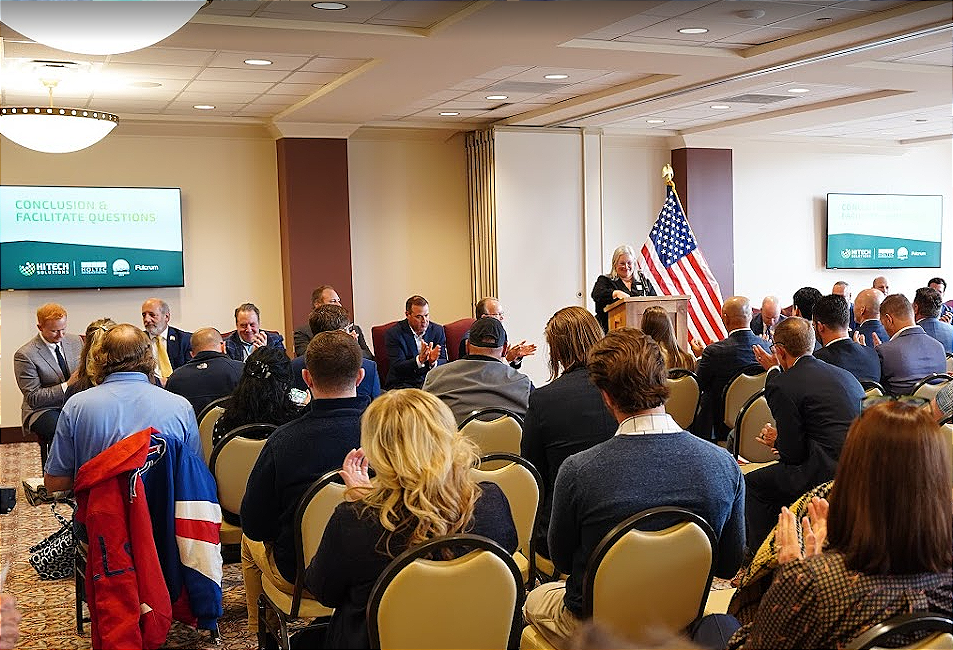
The announcement today represents the next major step in the project and means for implementing the ambitious Operation Gigawatt initiative, announced by Governor Spencer Cox in October 2024 to double Utah’s energy production. He called the announcement a “next-generation step in unleashing Utah’s immense energy resources.” Governor Cox emphasized that the project would lower energy costs, strengthen grid reliability, and create high-paying jobs for local residents.

“Utah is moving boldly toward energy independence through Operation Gigawatt,” Cox said. “This initiative is about more than reactors—it’s about workforce development, manufacturing, and securing our nation’s energy future. If America is going to remain secure and strong, we have to lead, not just in ideas. We have to lead in action today.”
He continued, “This project aims to build a fleet of small modular reactors, but it will do so much more than that. When we build the supply chains and workforce to meet those energy needs, we don’t just increase Utah’s energy security and independence. We increase our national security.”
Governor Cox said the project "creates a nuclear hub that manufactures the parts needed to operate and run advanced nuclear technologies… and a workforce training center that will bring stable, high-paying jobs to Brigham City. The benefits of this project will ripple beyond just Brigham City...securing Utah's role as a leader in nuclear-powered generation for generations to come.”
He noted a that safety needs to be central to the project's goals. “Safety remains the standard that we always build to… Gen three and Gen four technologies meet the strictest safety and environmental standards anywhere in the world.”
Why Brigham City?
Mayor DJ Bott framed the local significance of the initiative. Brigham City, he said, has a long legacy of energy innovation, dating back to 1892 when the city became one of the first rural towns in Utah to electrify its streets using water-generated electricity from Box Elder Creek. “Innovation is part of who Brigham City is,” Bott said. “We won’t wait for the energy future to find us. We’re going to create it here, with our state, educational, and industrial partners.”
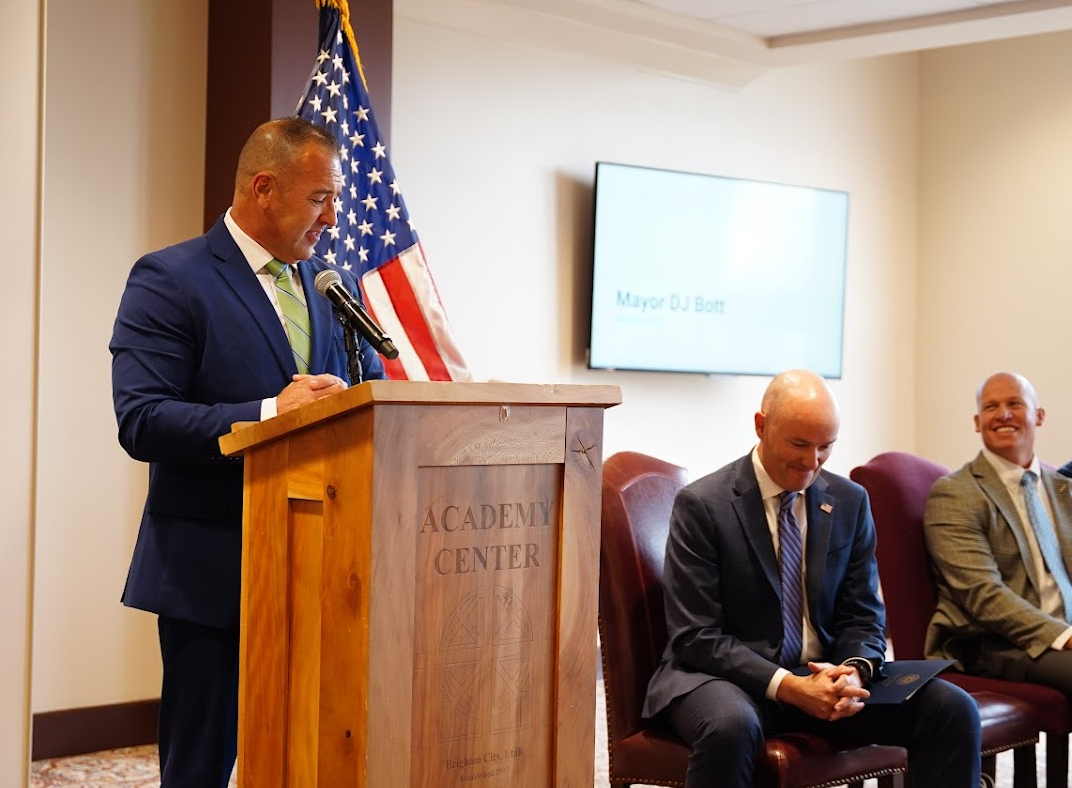
Box Elder County’s strategic location in Northern Utah’s aerospace and defense corridor also positions it as a prime hub for advanced energy development. The mayor noted that the nuclear ecosystem would deliver generationally transformative benefits, providing careers that allow Utahns to build their futures at home rather than seeking opportunities elsewhere.
Corporate Leadership and Holtec’s SMR Design Advantage
Hi Tech Solutions CEO Chris Hayter (Eden, UT) emphasized that the project is the culmination of years of careful planning. “From our first 20 people to nearly 1,000 today, we’ve been preparing to build something amazing here in Utah,” Hayter said. HTS will lead operational training and workforce development, with a focus on integrating military veterans into the nuclear workforce through the Department of Defense’s SkillBridge program. The initiative is expected to create over 1,300 high-paying jobs, including construction and long-term operational roles.
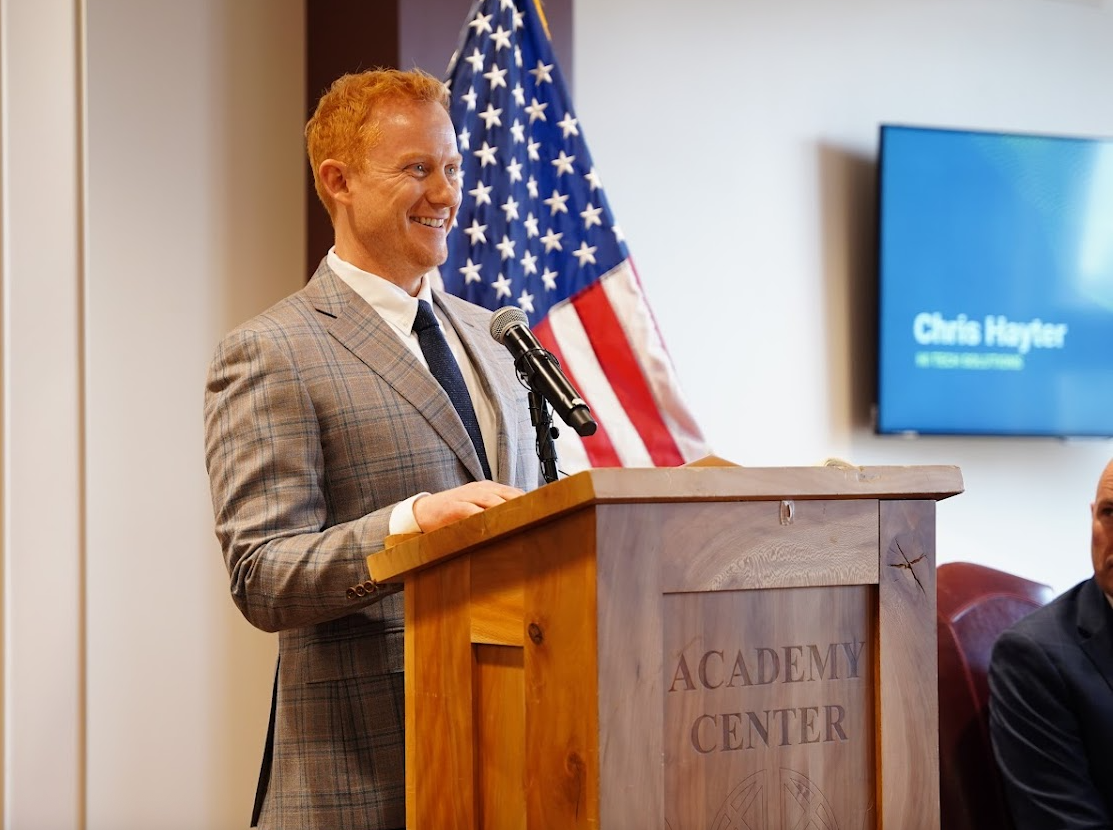
Holtec International’s President of Global Clean Energy, Dr. Rick Springman, highlighted the technical strengths of the SMR-300 reactors. “We are not retrofitting old designs,” Springman explained in a conversation with TechBuzz at the event. “We started from a blank sheet of paper, incorporating 40 years of lessons to create a walk-away safe, modular, and low-water-use reactor.” The reactors’ air-cooled condenser system drastically reduces water usage, a critical consideration in Utah’s arid environment, while passive safety systems ensure continuous cooling and operation even during grid outages. Each dual-unit plant will generate 646 megawatts, enough to power a sizable city or critical infrastructure such as data centers and defense installations.
Addressing cybersecurity, Dr. Springman noted, “The NRC requires very robust safeguards. Our digital control systems have multiple redundancies, and there’s always an analog backup — one button can safely shut down the plant if needed.”
The lessons of Fukushima remain a stark reminder of nuclear vulnerabilities. In 2011, a magnitude 9.0 earthquake and subsequent tsunami disabled both the main power supply and backup diesel generators at the Fukushima Daiichi plant, causing reactor overheating, core meltdowns, and the release of radioactive material.

“After Fukushima, the industry has added layers of redundancy for water and power,” Springman said. “With the SMR-300, we’ve started from a blank sheet. Passive, gravity-driven cooling and compact, modular layouts minimize risk, ensuring safe, continuous operation, even under extreme conditions — a critical advantage for Utah’s energy security,” he shared with TechBuzz.
Legislative Support and Statewide Vision

Utah’s legislative leaders underscored the initiative’s broader implications. Senate President Stuart Adams described the project as an urgent response to global energy competition. “Utah needs more energy. The United States needs more energy. The free world needs more energy,” Adams said.
“Doubling or tripling our energy production is not enough. We probably need 100 gigawatts of new power — and we need it fast. The country that controls AI will control the future of the world — economically and militarily. And AI needs data centers, and data centers need continuous baseload power,” he added.

House Speaker Mike Schultz highlighted the state’s proactive legislative environment. “We’ve established councils, consortia, and institutes to make sure the best minds in science, policy, and industry are guiding this nuclear resurgence,” Schultz said. He also emphasized workforce development in Utah high schools, connecting students directly to nuclear career pathways. “What we’re celebrating today isn’t just about jobs. It’s about security, opportunity for our kids and grandkids, and lowering the cost of energy for Utahns. When Utahns open their power bill, we want it to be the lowest in the nation,” he said.
Joel Ferry, Executive Director of the Utah Department of Natural Resources and a fifth-generation Box Elder County resident, drew historical parallels between the region’s strategic importance during the transcontinental railroad era and today’s energy revolution. Ferry noted that the SMR deployment combines environmental stewardship with economic growth, offering base-load, low-water, and low-land-use power solutions for generations to come.
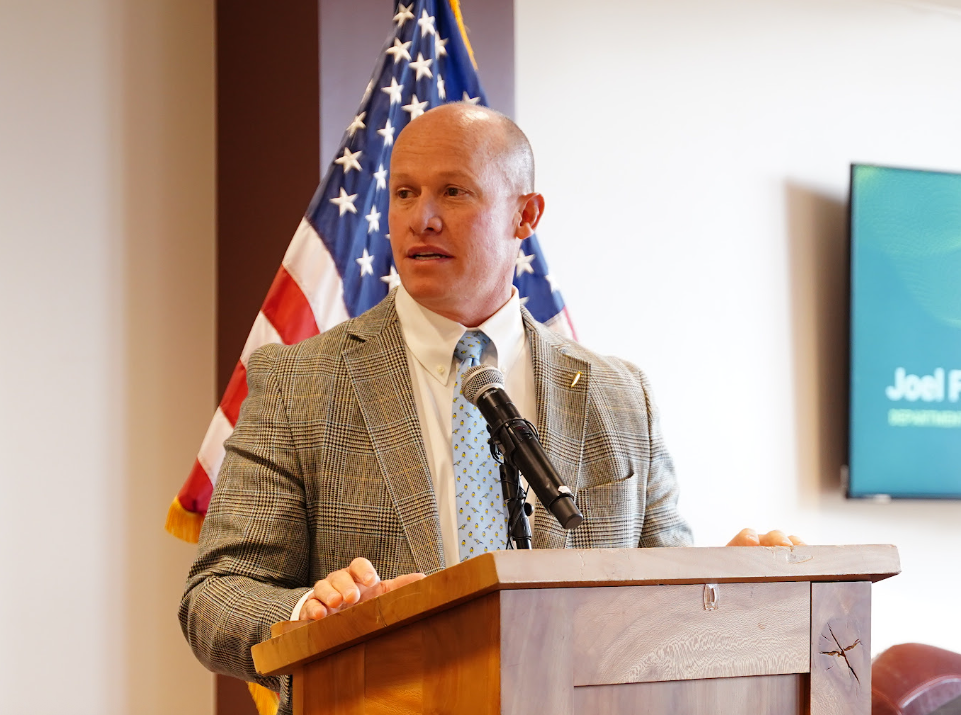
Jeff Moss, Executive Director of the Governor’s Office of Economic Opportunity, highlighted the project’s economic and educational impact: “This project brings $750 million in private capital, 700 construction jobs, and 650 long-term operational roles. These are high-paying, high-impact jobs that will make a real difference for Utah."
Moss also lauded the fleet approach of this project: “A fleet approach that drives down costs and standardizes production is critical for Utah and for the nation’s nuclear future.”

National Security and Veteran Integration
One of the unique aspects of the initiative is how it emphasizes workforce reintegration for veterans. Medal of Honor recipient Master Sgt Earl Plumlee described the project as a rare opportunity to give veterans meaningful professions that contribute to both national defense and the energy future. “A job pays your bills. A profession pays your soul.” Master Sgt Plumlee said. “This initiative gives veterans the dignity of a career while helping protect the country and drive it into the future.”
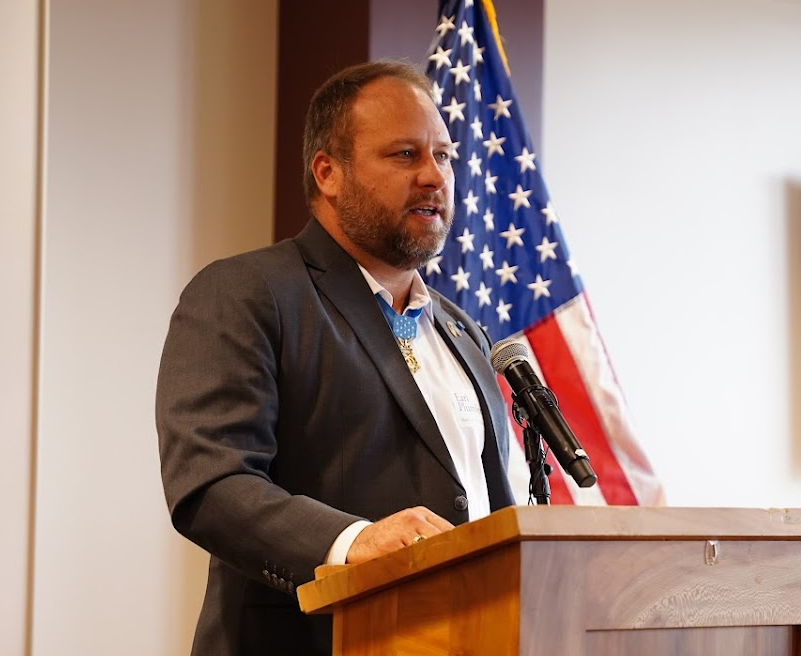
"It’s no surprise to me that Utah stepped up. I’m excited to work with this team on such a noble venture," added Plumlee.
The Project
Holtec and HTS plan to initially deploy four SMR-300 units, with each dual-unit plant generating 646 megawatts, enough to power roughly 500,000 to 600,000 homes, depending on local energy use. To put it another way, a single plant could supply a city the size of Salt Lake City or nearly twice the population of Brigham City. Combined with Utah’s other energy resources, these SMRs could support data centers, critical infrastructure, and industrial operations while providing reliable, carbon-free baseload power for the region.
Holtec's modular, scalable design allows for future expansion across the Mountain West. Dr. Rick Springman highlighted that the reactors’ compact footprint, passive safety systems, and advanced digital controls represent a next-generation approach to nuclear energy, capable of supporting both commercial and defense applications. While the plants are expected to be located in Box Elder County, exact sites have not yet been finalized. Springman also noted that Utah is slated to become a hub for SMR manufacturing in the future, though specific plans are still in development.

“This is a comprehensive nuclear ecosystem,” Springman said. “We’re delivering not just reactors, but manufacturing, training, and operational capabilities to make Utah a global benchmark for nuclear innovation.”
As Utah launches the Mountain West’s first comprehensive nuclear energy initiative, it positions itself at the intersection of innovation, environmental stewardship, and national security. By integrating advanced SMR technology, local workforce development, and strategic partnerships, including collaborations with local universities and technology colleges, the project aims to redefine energy production while strengthening regional and national resilience.
The initiative, officially referred to as the Mountain West Crossroads Energy Initiative, was named by Holtec President Dr. Rick Springman. “I was talking with Mayor Bott about what to call our SMR initiative… he mentioned that Brigham City is known as the Crossroads of the West… I can’t stop thinking about it… I like to call this project Mountain West Crossroads Energy Initiative.”
“This has been a great opportunity to see Operation Gigawatt’s collaborative spirit on full display,” said Emy Faulkner Lesofski, Director of the Utah Office of Energy Development. “Together, we’re building the environment that allows communities to do what they do best: build, grow, and lead.”


